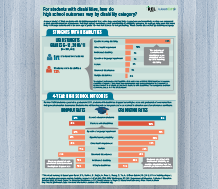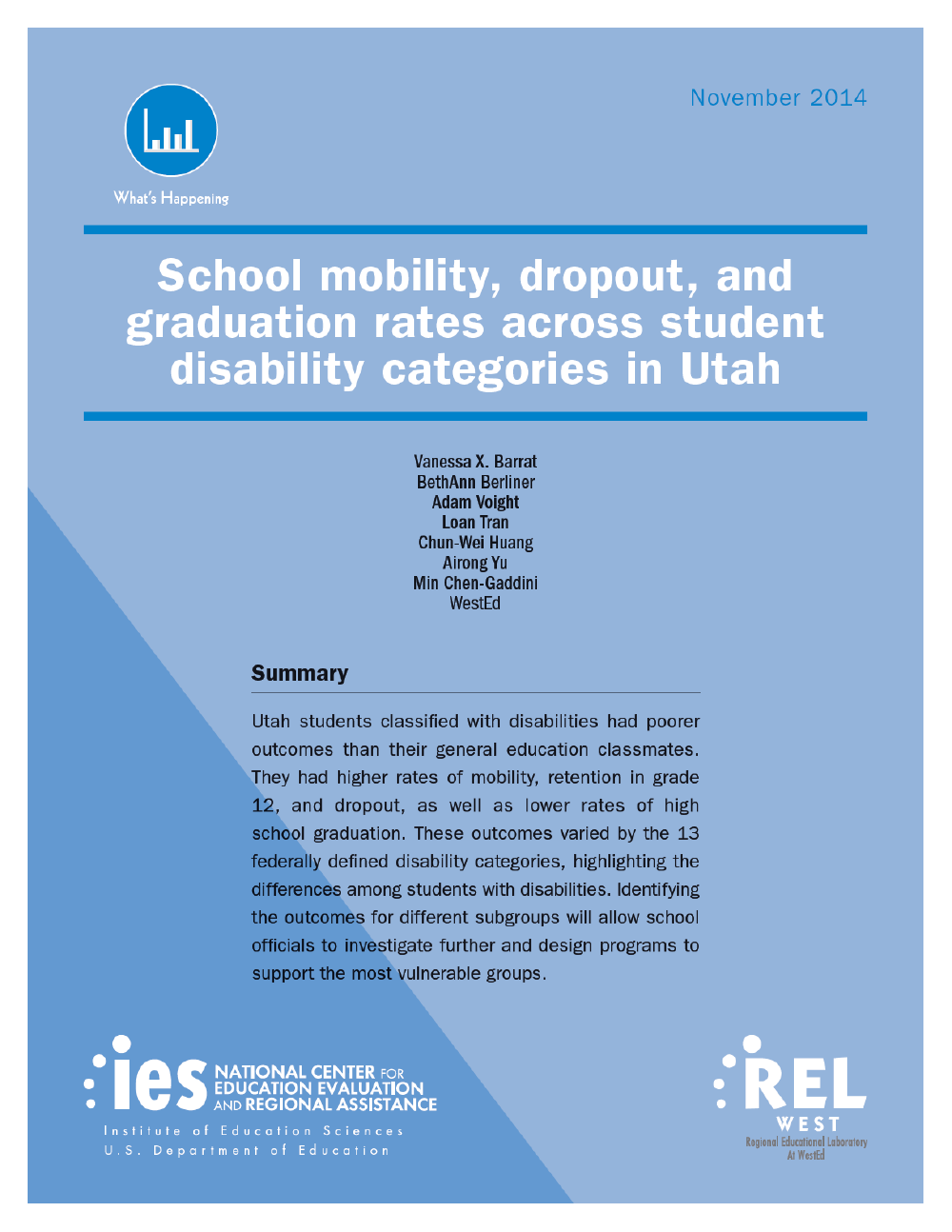Student High School Outcomes Vary by Disability Category
Posted on

As a group, students with disabilities have poorer dropout and graduation outcomes than their classmates, but these outcomes vary widely by different disabilities.
Understanding how student needs vary by disability category is critically important when looking at ways to support students through graduation.
The Dropout Prevention Alliance for Utah Students with Disabilities recently published a report that examined the rates in which Utah students classified with different disabilities changed schools, dropped out, or graduated.
This useful infographic (PDF) breaks down the findings of that report.
One key finding? Students with an emotional disturbance, multiple disabilities, intellectual disability, traumatic brain injury, or autism were at greatest risk of failing to graduate during the standard four-year high school time frame.
In addition to downloading the infographic (PDF), learn about the Dropout Prevention Alliance for Utah Students with Disabilities, a partnership among the Utah State Office of Education, the Regional Educational Laboratory West at WestEd, and the National Dropout Prevention Center for Students with Disabilities.

